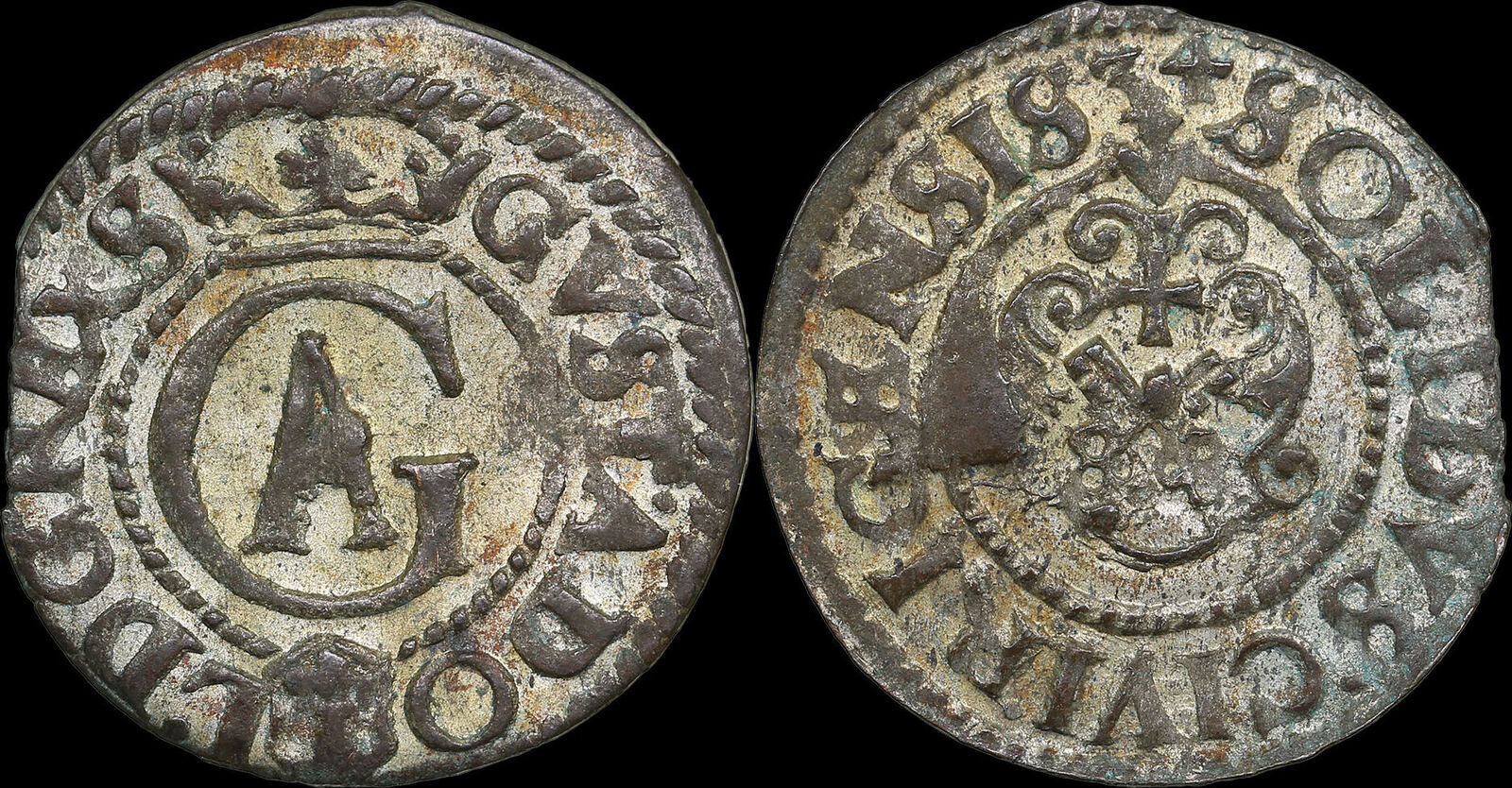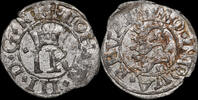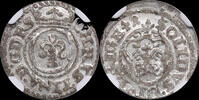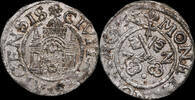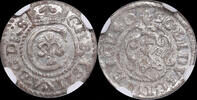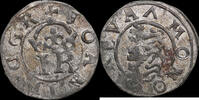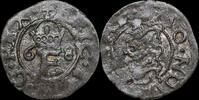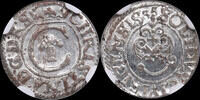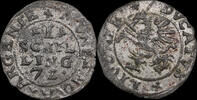MA-ID: 601302090
Customer feedback Numex OÜ
Excellent seller, highly recommended!
Thank You! Nice items for reasonable price, quick shipping! Excellent!!!
Ja, ich bin mit dem gekauften Geldschein vollig zufrieden. Danke.
M.Brindz...
Super Ware! Gerne wieder.
Livonia / Riga 1634 Swedish Occupation, Riga solidus - Gustav II Adolf (1611-1632) AU/UNC
Numex OÜ 

9
On MA-Shops since 9 years
1195 ratings,
100 % Positive (last 24 months)
Worldwide shipping
34.68 £40,00 EUR
Import tax may be added
+ 4.33 £ shipping ( to United Kingdom )
Delivery time: 11 - 14 days
+ 4.33 £ shipping ( to United Kingdom )
| Customer Support +49 (0)2871 2180 383 |
| Payment methods |
| Wire Transfer |
The Riga Solidus Under Gustav II Adolf: A Glimpse into Swedish Livonia's Numismatic Heritage
The Riga Solidus, minted during the reign of Gustav II Adolf of Sweden from 1611 to 1634, serves as a numismatic emblem of the Swedish occupation of Livonia, reflecting both the political ambitions and the economic realities of the time.
Historical Context:
Gustav II Adolf, known as Gustavus Adolphus, was not only a key figure in the Thirty Years' War but also instrumental in expanding Sweden's influence across the Baltic, including the acquisition of Livonia. This region, encompassing parts of modern-day Estonia and Latvia, became a focal point for Swedish intervention due to its strategic importance and the ongoing conflicts with Poland-Lithuania. The peace treaties, particularly the Truce of Altmark in 1629, formalized Swedish control over Livonia, which was later confirmed in the Treaty of Oliva in 1660.
The Coin Itself:
The Riga Solidus, or Schilling, was a small silver coin primarily used for local commerce. It bore the monogram "GA" for Gustavus Adolphus on the obverse, often surrounded by a legend proclaiming his title and dominion. The reverse typically featured the Swedish coat of arms, indicating the integration of Livonia into the Swedish realm.
Numismatic Analysis:
Mintage and Design: These coins were not just economic instruments but symbols of Swedish authority. Their design, though simple due to the era's minting capabilities, was significant for the time's political messaging. The solidus was a statement of sovereignty, much like the larger currency pieces, but accessible for everyday transactions.
Condition and Rarity: Coins from this period, especially in UNC (Uncirculated) condition, are prized by collectors for their historical value and the insight they offer into the minting technology of the 17th century. The preservation of such coins speaks to their limited circulation or perhaps to the hoardings of the time, which might have been common in war-torn regions.
Economic and Cultural Impact: The solidus reflected the economic policies of the Swedish administration, aiming to unify currency across its territories, facilitating trade and administrative control. This coin also underscores the cultural integration efforts, where the imagery and language (using Latin for broader appeal and legitimacy) were chosen to resonate with both local and foreign users.
Counterfeits and Variations:
Interestingly, the Riga solidus was also subject to counterfeiting, notably from the Suceava mint in Moldavia. These counterfeits, often of lower quality with more copper content, hint at the coin's broader economic impact beyond Swedish boundaries. They were not just forgeries for economic gain but could be seen as acts of political defiance or economic warfare, illustrating the coin's significance in the geopolitical landscape.
Conclusion:
The Riga Solidus under Gustav II Adolf is more than a coin; it's a historical artifact that encapsulates the Swedish ambitions in the Baltic, the intersection of economics with warfare, and the cultural dynamics of Livonia under foreign rule. For numismatists, these coins are windows into the past, providing tangible links to a time when coins were as much about power and propaganda as they were about commerce. The study of such coins enriches our understanding of how history was not just written in books but minted into everyday objects, circulating the narrative of empire, resistance, and change.
This article aims to provide a comprehensive look at the numismatic and historical significance of the Riga solidus, highlighting its role beyond mere currency.
The Riga Solidus, minted during the reign of Gustav II Adolf of Sweden from 1611 to 1634, serves as a numismatic emblem of the Swedish occupation of Livonia, reflecting both the political ambitions and the economic realities of the time.
Historical Context:
Gustav II Adolf, known as Gustavus Adolphus, was not only a key figure in the Thirty Years' War but also instrumental in expanding Sweden's influence across the Baltic, including the acquisition of Livonia. This region, encompassing parts of modern-day Estonia and Latvia, became a focal point for Swedish intervention due to its strategic importance and the ongoing conflicts with Poland-Lithuania. The peace treaties, particularly the Truce of Altmark in 1629, formalized Swedish control over Livonia, which was later confirmed in the Treaty of Oliva in 1660.
The Coin Itself:
The Riga Solidus, or Schilling, was a small silver coin primarily used for local commerce. It bore the monogram "GA" for Gustavus Adolphus on the obverse, often surrounded by a legend proclaiming his title and dominion. The reverse typically featured the Swedish coat of arms, indicating the integration of Livonia into the Swedish realm.
Numismatic Analysis:
Mintage and Design: These coins were not just economic instruments but symbols of Swedish authority. Their design, though simple due to the era's minting capabilities, was significant for the time's political messaging. The solidus was a statement of sovereignty, much like the larger currency pieces, but accessible for everyday transactions.
Condition and Rarity: Coins from this period, especially in UNC (Uncirculated) condition, are prized by collectors for their historical value and the insight they offer into the minting technology of the 17th century. The preservation of such coins speaks to their limited circulation or perhaps to the hoardings of the time, which might have been common in war-torn regions.
Economic and Cultural Impact: The solidus reflected the economic policies of the Swedish administration, aiming to unify currency across its territories, facilitating trade and administrative control. This coin also underscores the cultural integration efforts, where the imagery and language (using Latin for broader appeal and legitimacy) were chosen to resonate with both local and foreign users.
Counterfeits and Variations:
Interestingly, the Riga solidus was also subject to counterfeiting, notably from the Suceava mint in Moldavia. These counterfeits, often of lower quality with more copper content, hint at the coin's broader economic impact beyond Swedish boundaries. They were not just forgeries for economic gain but could be seen as acts of political defiance or economic warfare, illustrating the coin's significance in the geopolitical landscape.
Conclusion:
The Riga Solidus under Gustav II Adolf is more than a coin; it's a historical artifact that encapsulates the Swedish ambitions in the Baltic, the intersection of economics with warfare, and the cultural dynamics of Livonia under foreign rule. For numismatists, these coins are windows into the past, providing tangible links to a time when coins were as much about power and propaganda as they were about commerce. The study of such coins enriches our understanding of how history was not just written in books but minted into everyday objects, circulating the narrative of empire, resistance, and change.
This article aims to provide a comprehensive look at the numismatic and historical significance of the Riga solidus, highlighting its role beyond mere currency.
Info / FAQ
| Shipping fees | ||||
|---|---|---|---|---|
| 0.87 £ to 43.35 £ | 43.35 £ to 173.39 £ | 173.39 £ to 433.48 £ | over 433.48 £ | |
| China | 10.40 £ | n/a | n/a | n/a |
| Germany | 4.33 £ | 4.33 £ | 4.33 £ | 13.00 £ |
| Estonia | 4.33 £ | 4.33 £ | 4.33 £ | 10.40 £ |
| United Kingdom | 4.33 £ | 4.33 £ | 4.33 £ | 21.67 £ |
| United States | 4.33 £ | 4.33 £ | 4.33 £ | 34.68 £ |
| European Union | 4.33 £ | 4.33 £ | 4.33 £ | 21.67 £ |
| World | 10.40 £ | 13.00 £ | 86.70 £ | 86.70 £ |
Information
Online orders are welcome as always and will be shipped directly.
|
Seller Home | 0Shopping cart | Terms of sale | Contact | MA Terms of sale | Privacy policy | Warranty | MA-Shops New Items Copyright ® 2001-2025, MA-SHOPS Coins All Rights Reserved. Designated trademarks and brands are the property of their respective owners. |
 Buy coins with warranty
Buy coins with warranty


